Tanks – The Fallen Giants Of The World War I
A British tank which has crashed into a tree, near Cambrai, Franc, 1917:

Getty Images
The development of tanks in World War I was a response to the stalemate that had developed on the Western Front. Although vehicles that incorporated the basic principles of the tank (armour, firepower, and all-terrain mobility) had been projected in the decade or so before the War, it was the heavy casualties sustained in the first few months of hostilities that stimulated development. Research took place in both Great Britain and France, with Germany only belatedly following the Allies’ lead.
First World War tanks were descendants of vehicles like this early caterpillar-track farm machine, built by Rustin and Hornsby of Lincoln and used in England, 1902:
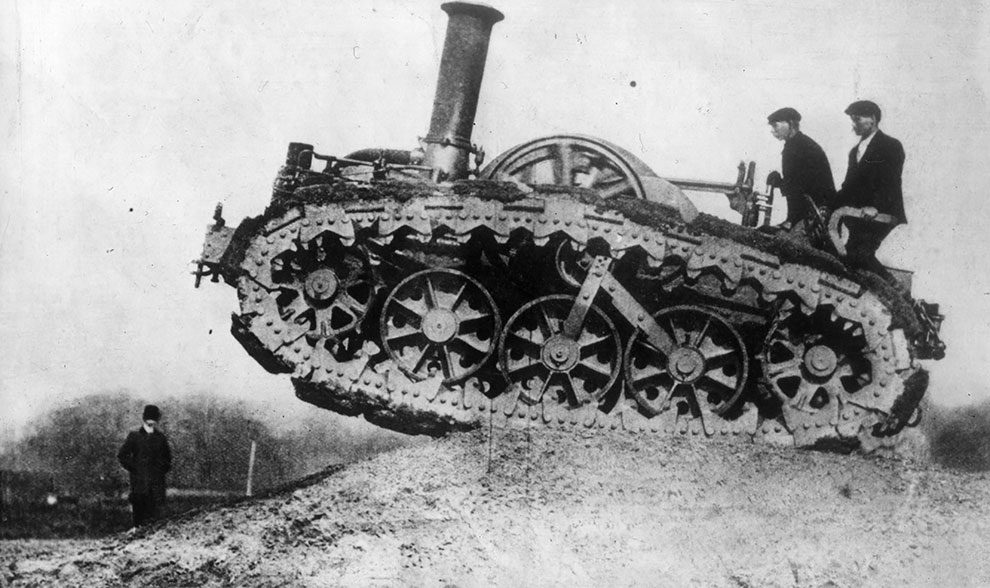
Getty Images
In Great Britain, an initial vehicle, nicknamed Little Willie, was constructed at William Foster & Co., during August and September 1915. The prototype of a new design that would become the Mark I tank was demonstrated to the British Army on February 2, 1916. Although initially termed “Landships” by the Landships Committee, production vehicles were named “tanks”, to preserve secrecy. The term was chosen when it became known that the factory workers at William Foster referred to the first prototype as “the tank” because of its resemblance to a steel water tank.
A light tank moving on rough terrain, 1917:
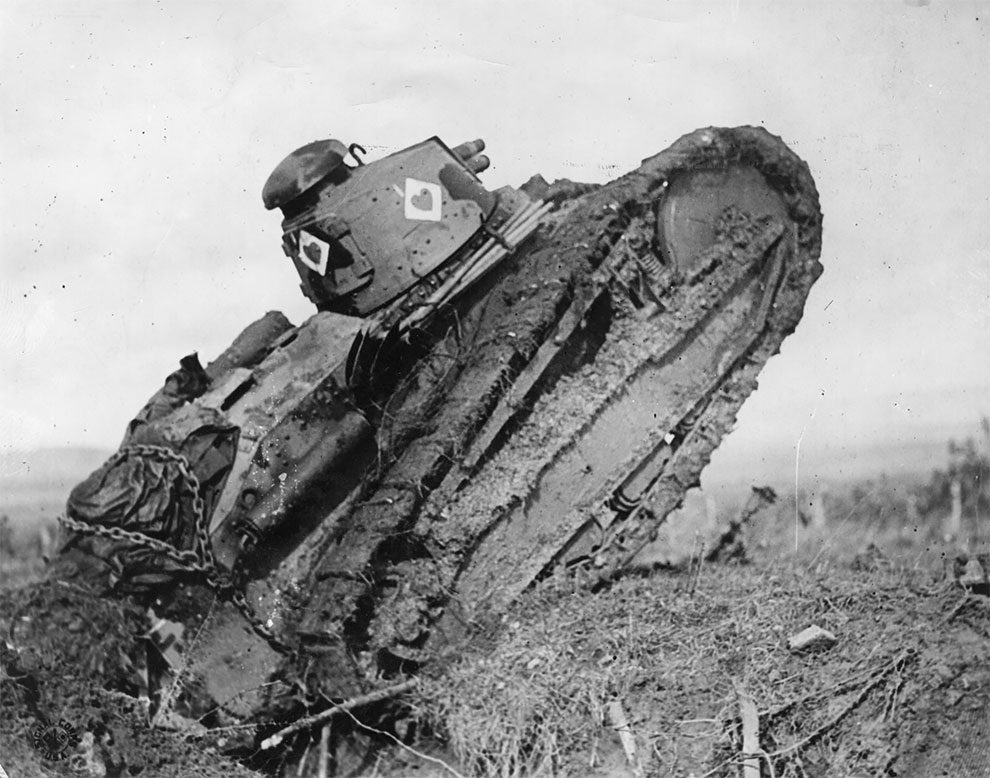
Getty Images
The French fielded their first tanks in April 1917 and went on to produce far more tanks than all other combatants combined.
One of the first American tanks driving past the “Flatiron” building in New York, 1917:
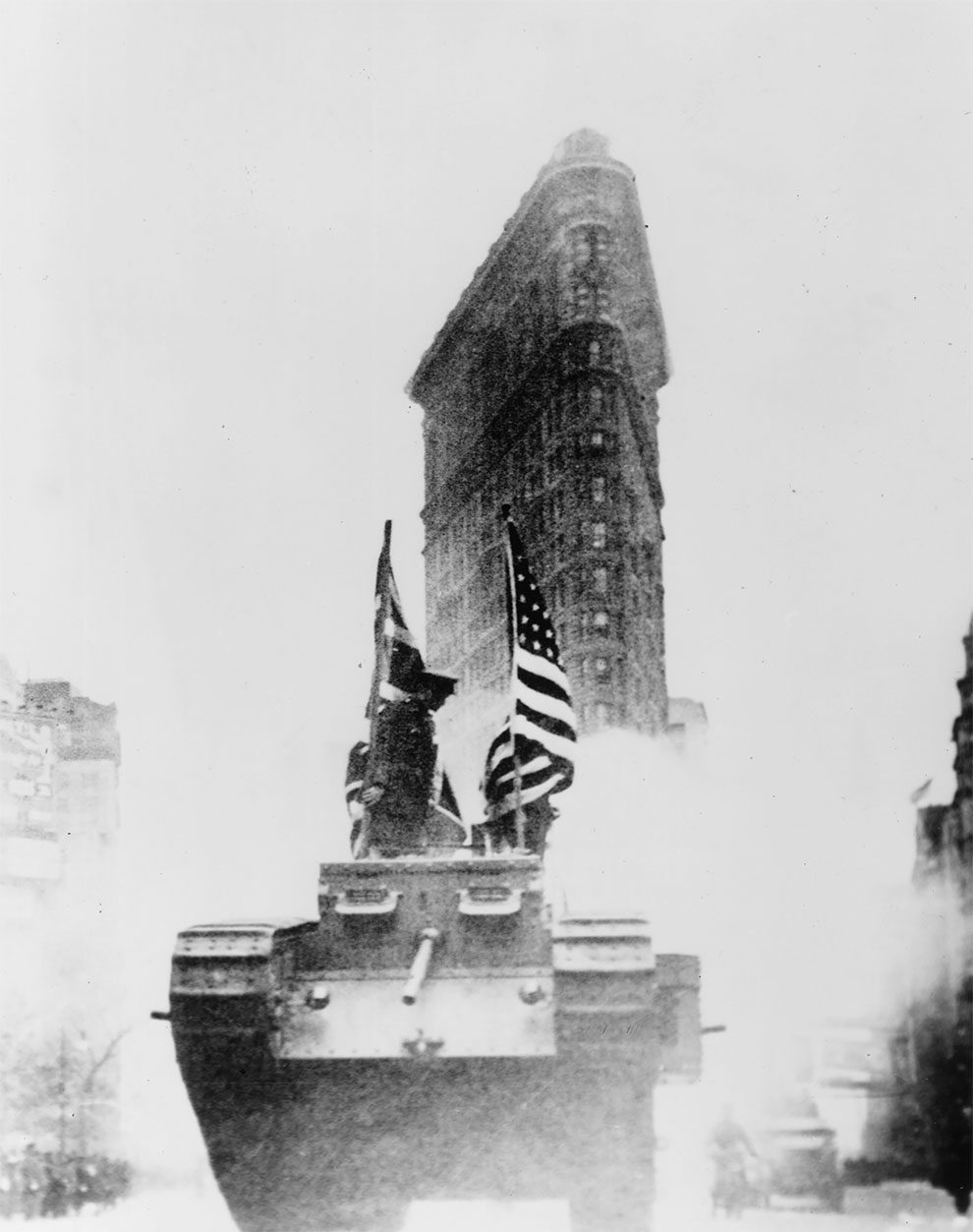
Getty Images
The Germans, on the other hand, began development only in response to the appearance of Allied tanks on the battlefield. Whilst the Allies manufactured several thousand tanks during the War, Germany deployed only 1680 of her own.
A British tank in France during World War I, 1917:
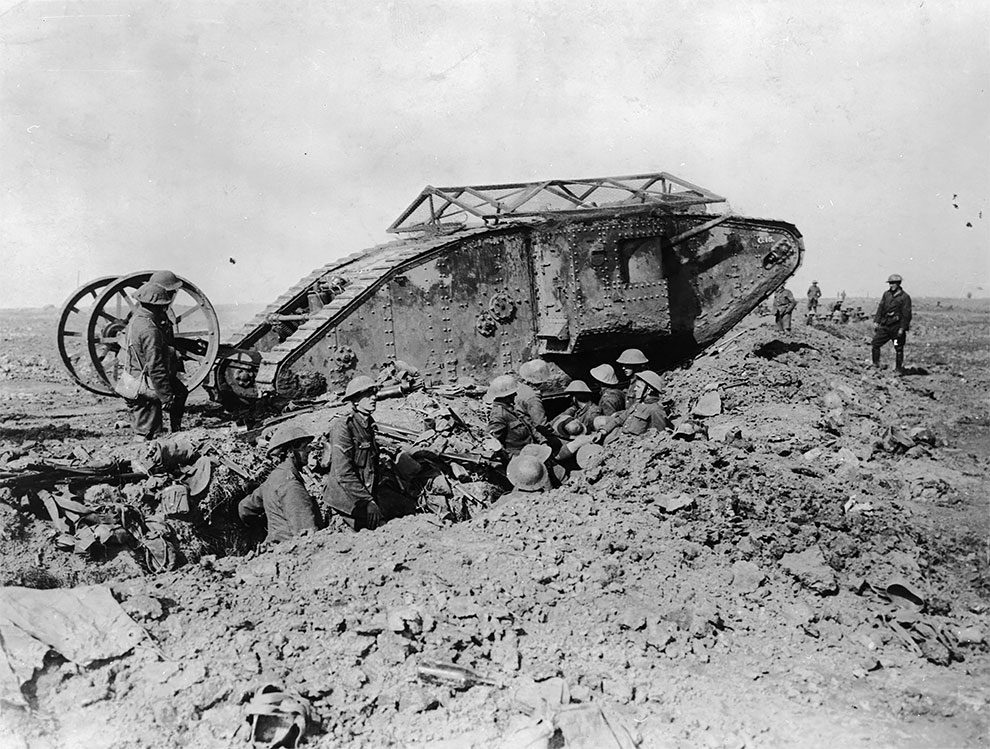
Getty Images
The first tanks were mechanically unreliable. There were problems that caused considerable attrition rates during combat deployment and transit. The heavily shelled terrain was impassable to conventional vehicles, and only highly mobile tanks such as the Mark and FTs performed reasonably well. The Mark I’s rhomboid shape, caterpillar tracks, and 26-foot (8m) length meant that it could navigate obstacles, especially wide trenches, that wheeled vehicles could not. Along with the tank, the first self-propelled gun (the British Gun Carrier Mk I) and the first armoured personnel carrier (the British Mk IX) were also constructed in World War I.
A British armoured car crippled by enemy gunfire with its crew either dead or captured. The Vickers Maxim guns have been disabled and their cartridge belts torn away, 1918:

Getty Images
French troops entering the Rhineland, 1918:

Getty Images
An American tank, 1917:

Getty Images
An American tank, 1917:

Getty Images
A “male” MKIV tank at the Lord Mayor’s show in London, 1917:
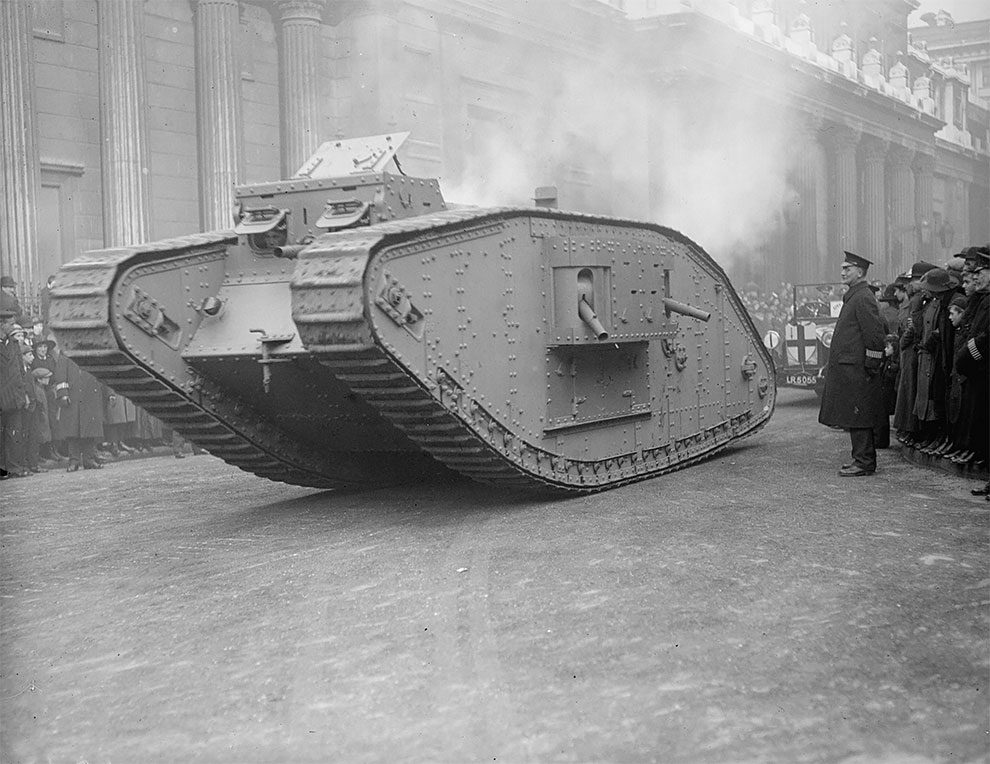
Getty Images
Victory the Bulldog posing on a tank in Trafalgar Square during a campaign to sell War Loan certificates, 1917:
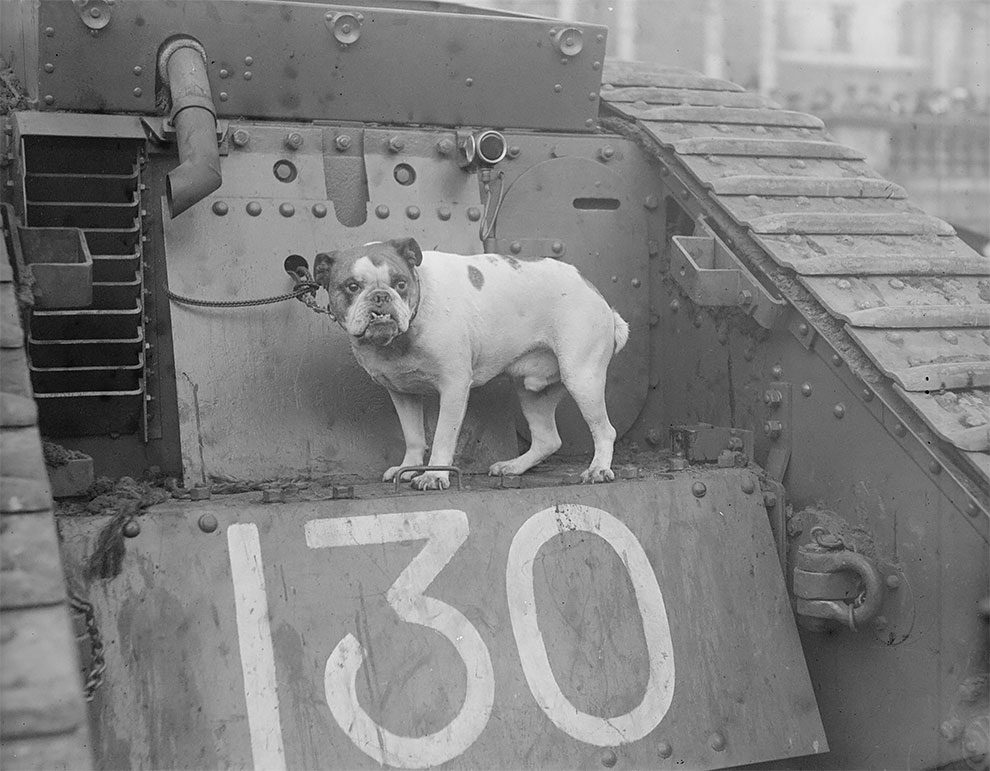
Getty Images
A man standing on top of a tank in Trafalgar Square and speaking in favour of war bonds, 1917:

Getty Images
Germans testing the climbing powers of captured British tanks, redecorated in German colours, 1917:
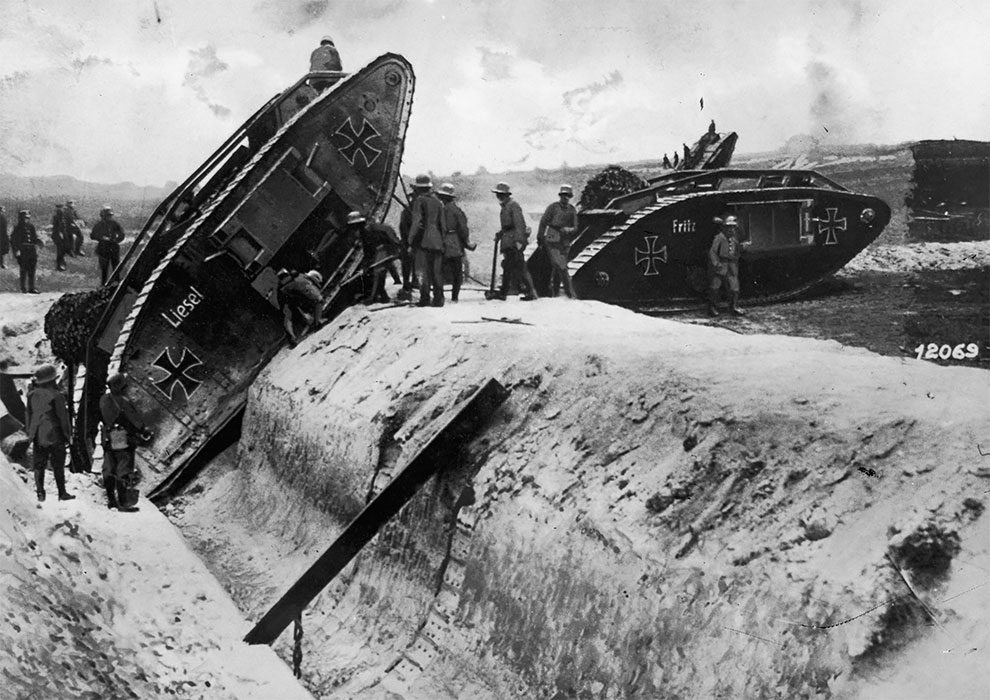
Getty Images
A light tank which has got into difficulties after tumbling into a trench, 1917:

Getty Images
A British tank crossing the trenches in Flanders, 1917:

Getty Images
A German tank emerges from the forest, in preparation for an attack, 1917:
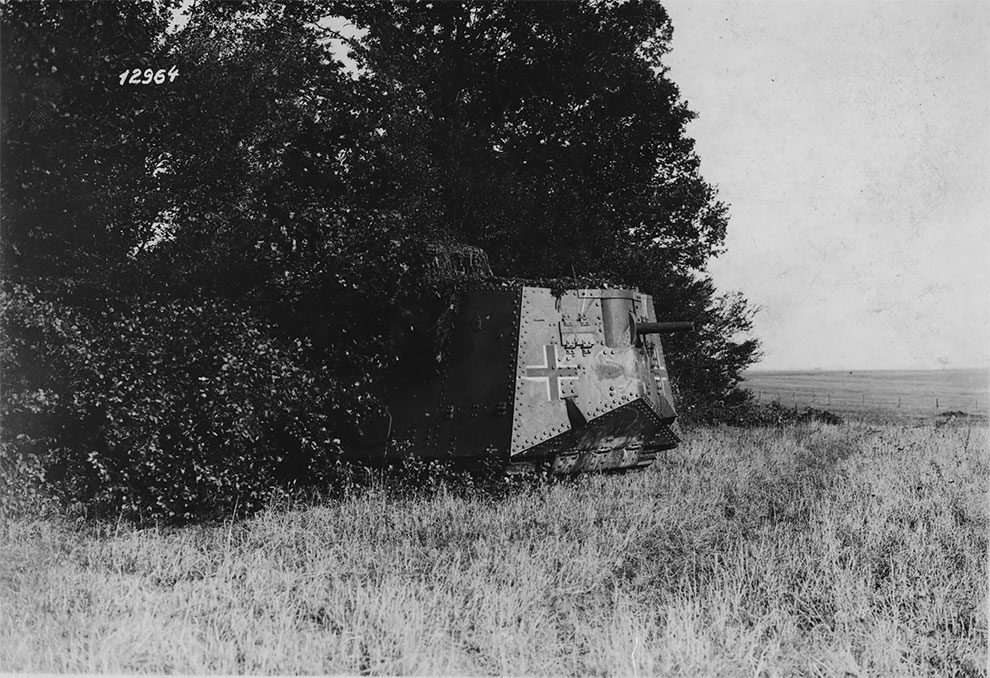
Getty Images
A British Mark A Whippet Medium tank advancing through the mud to penetrate the German lines at Morcourt. Only two hundred of these tanks were ever manufactured, 1918:
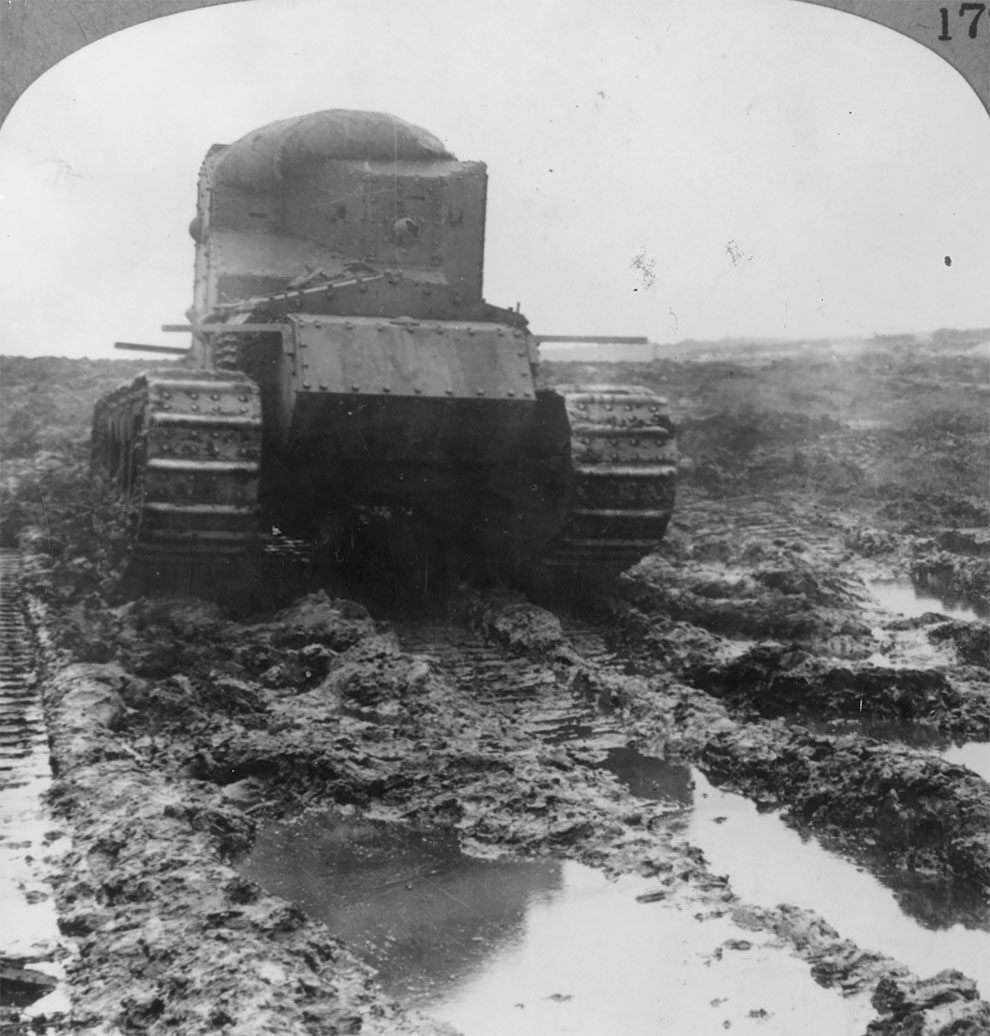
Getty Images
An early French tank encountering rough terrain, 1917:

Getty Images
A British tank burns furiously, having been caught in the jet of a flame thrower and its fuel contents ignited, 1918:

Getty Images
An American soldier walks ahead of an MKIV British-made tank, 1918:
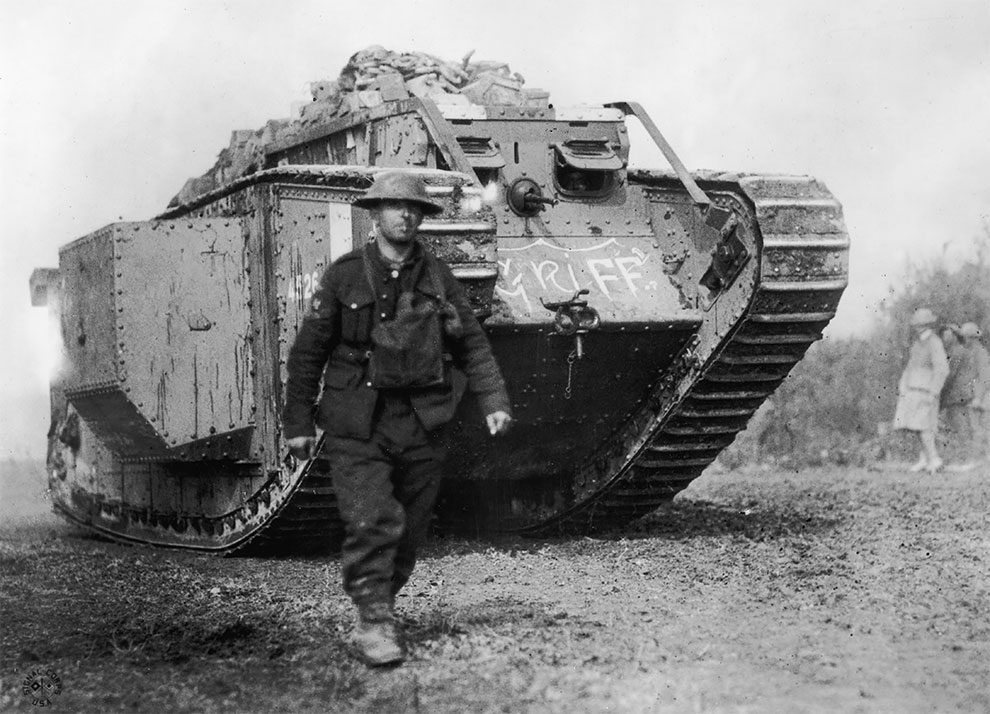
Getty Images
A British tank of the kind that managed to break down the German barbed wire defences at Cambrai, 1918:

Getty Images
An American Army tank, 1917:
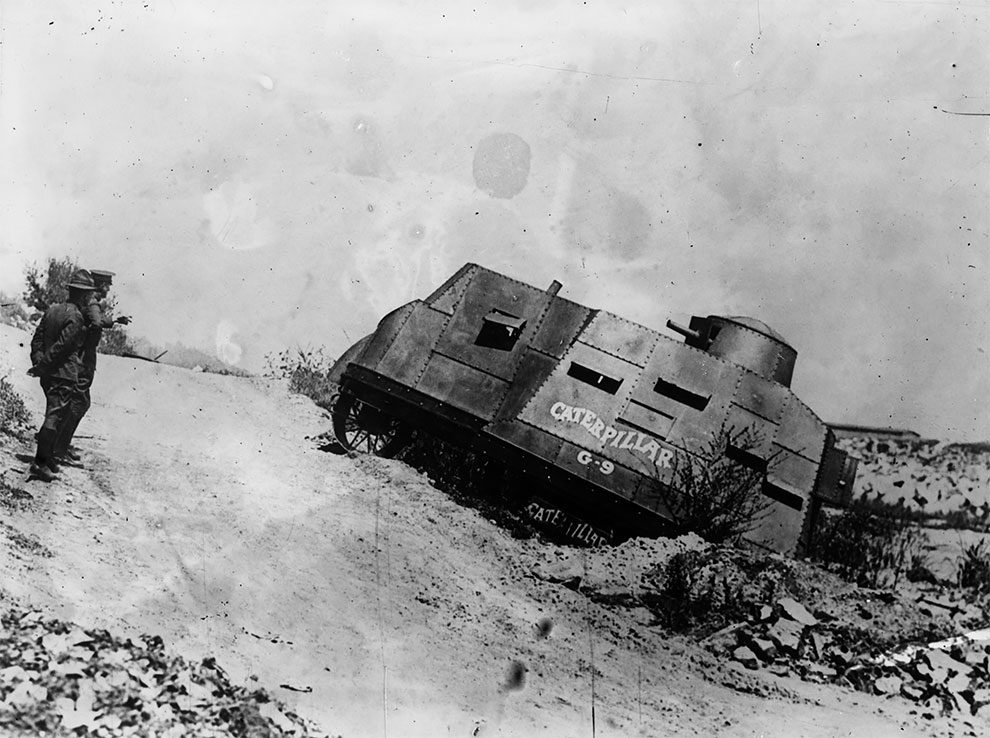
Getty Images
A British Mark I tank, the first ever military vehicle of this kind, in France, November 1916:
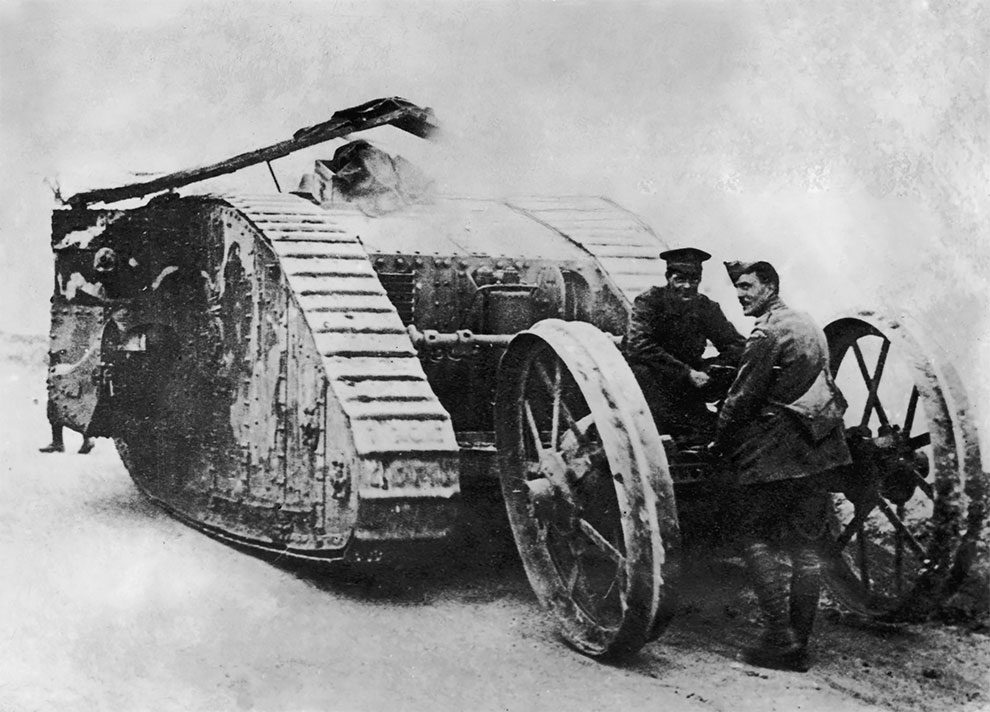
Getty Images
An early British tank, equipped with a wood fascine to aid trench-crossing, Belgium, circa 1917:
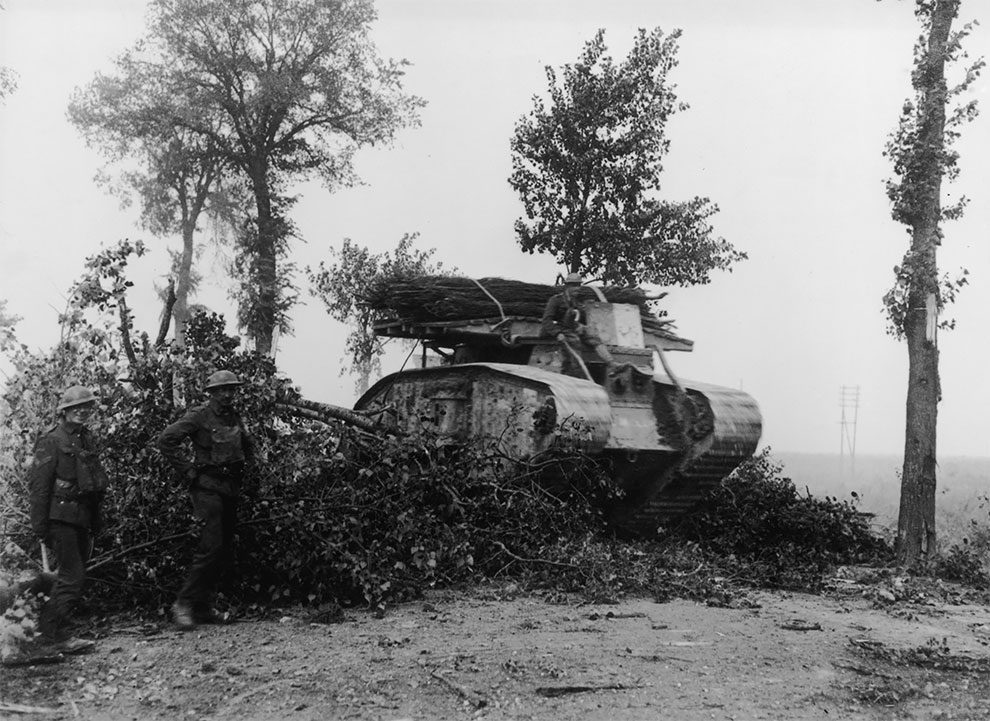
Getty Images
The crew of a German tank surrendering to the crew of a British tank in a scene from a British film shot in Dorset, England, 1927:

Getty Images
A man dismantling a tank with a blow torch, during the post war disarmament in Germany, 1920:
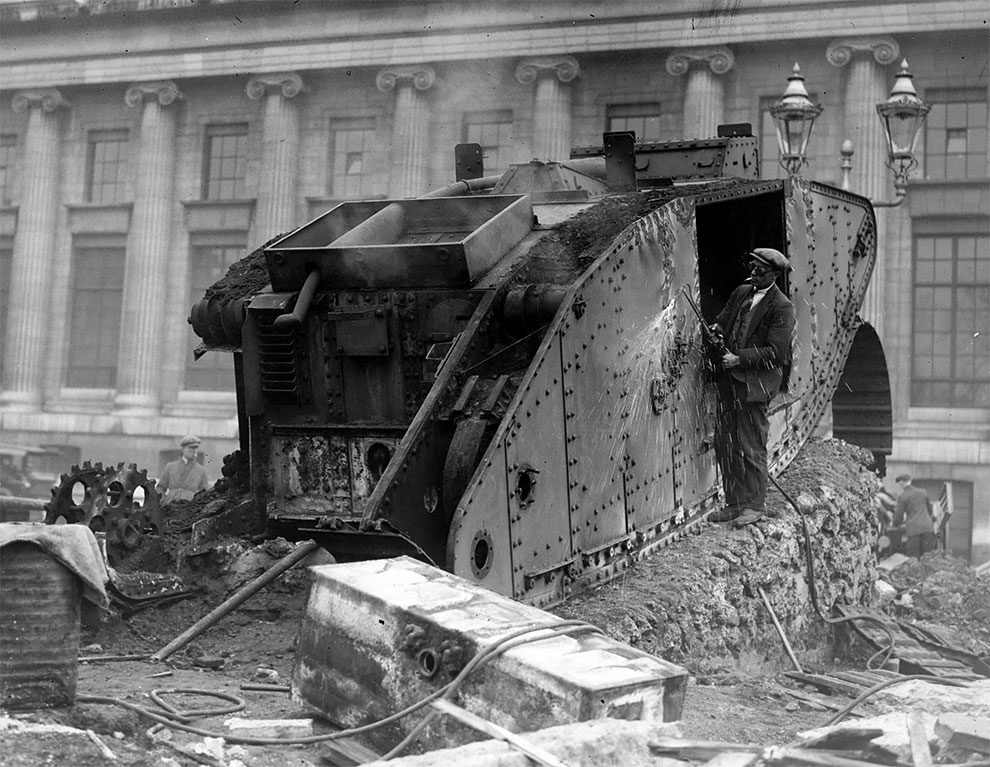
Getty Images
Renault FT-17 light tanks on patrol duty, within the area of the French concession in China, 1927:

Getty Images
British Army tank trials in Lincolnshire, 1918:
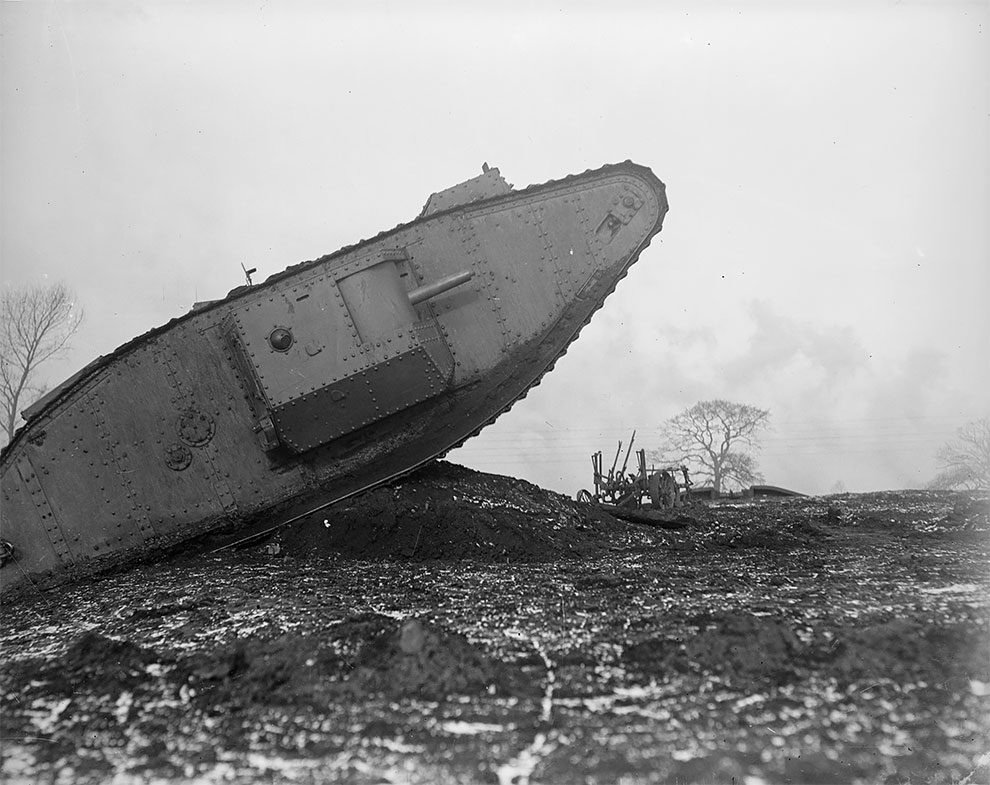
Getty Images
Soldiers of the 18th Infantry Division fleeing from shell fire in the French village of Exermont, 1918:
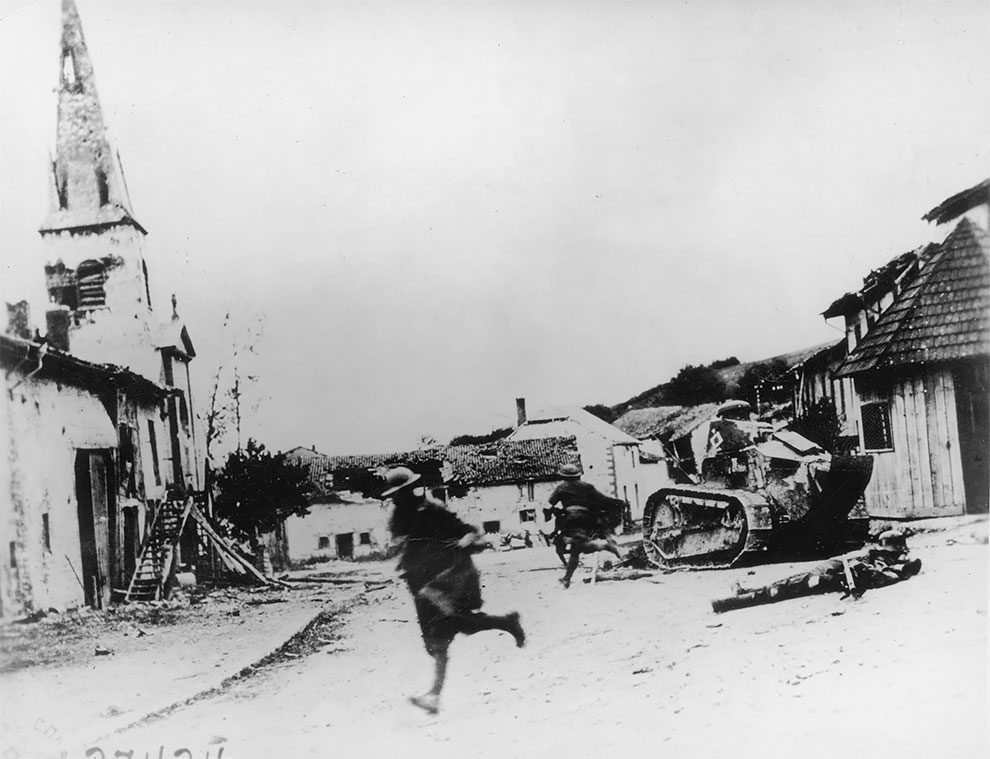
Getty Images
German soldiers clustered around a tank in a Berlin street during a troubled period of the Weimar Republic, 1920:
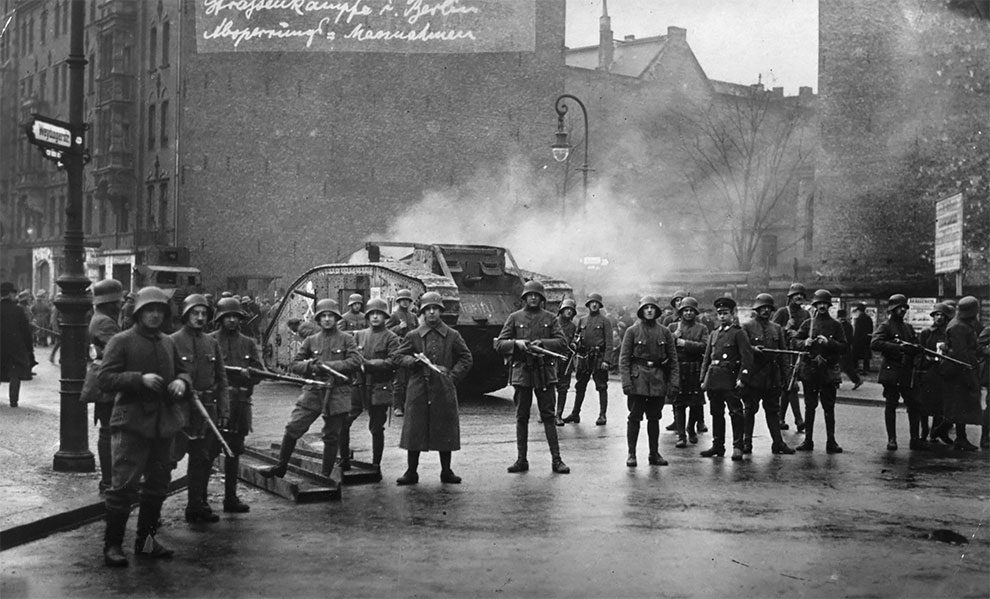
Getty Images
French soldiers holding flags and riding in tanks in front of the Arc de Triomphe on the Champs Elysees during a Bastille Day Victory Parade celebrating the end of World War I, Paris, France, 1919:
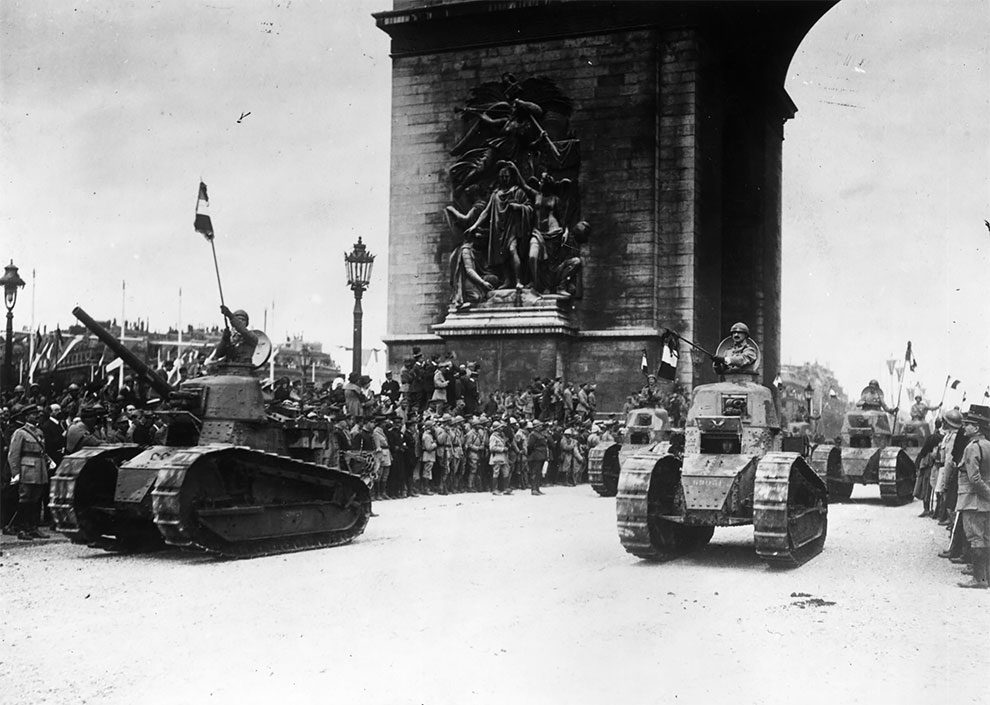
Getty Images
A group of men inspecting a tank parked at Lincoln’s Inn, London, during an inquiry, 1919:
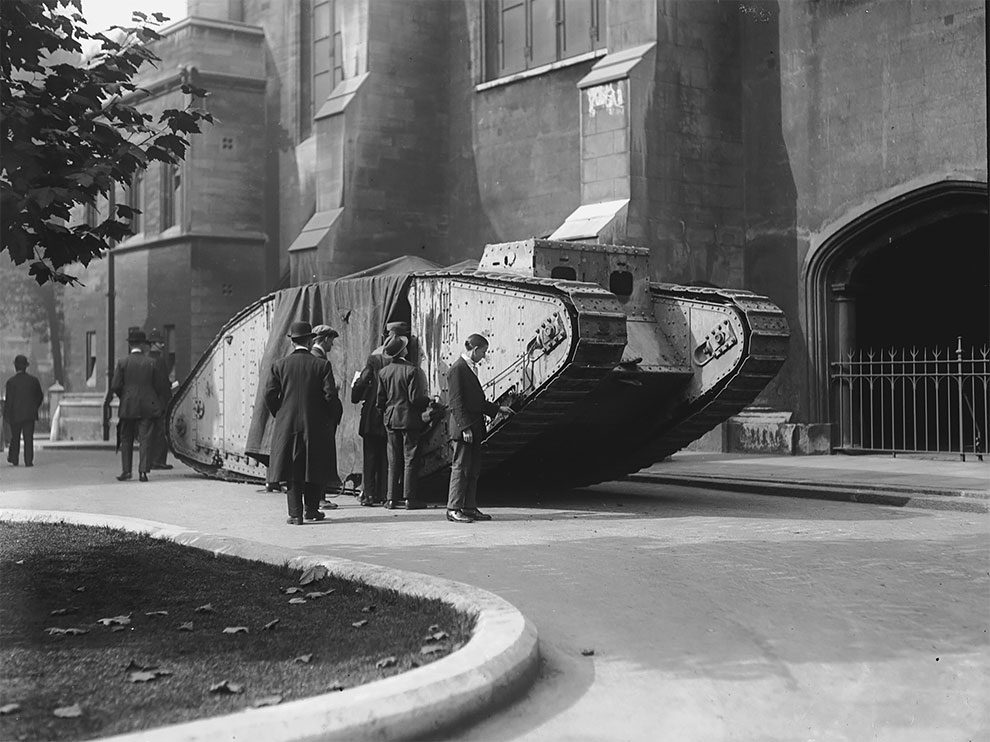
Getty Images
Two women war workers driving a steam engine at a site for tank trials in Lincolnshire, 1918:
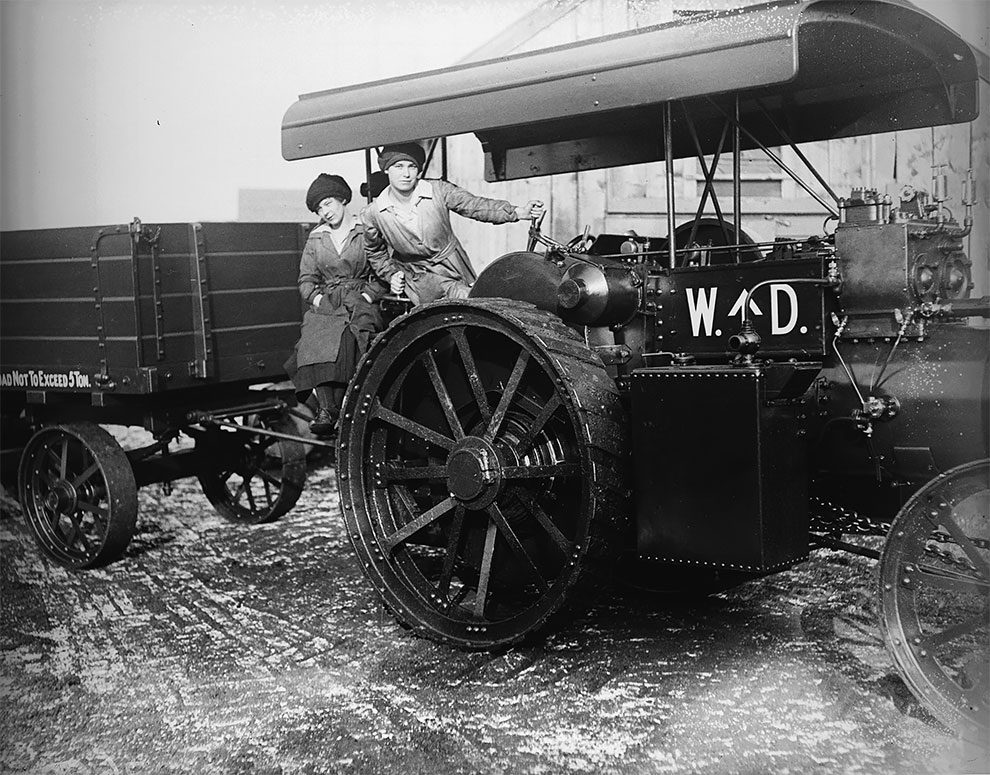
Getty Images
The tank which played a prominent role in the Johannesburg rebellion, where union unrest erupted in the Rand Revolt, in which white workers, fearful of being replaced in the mines by lower-paid non-white workers, staged a bloody strike that was ended only by the intervention of government troops. The tank is seen passing Corner House, the Head Office of the Chamber of Mines and the Johannesburg Consolidated Investment Corporation, 1925:
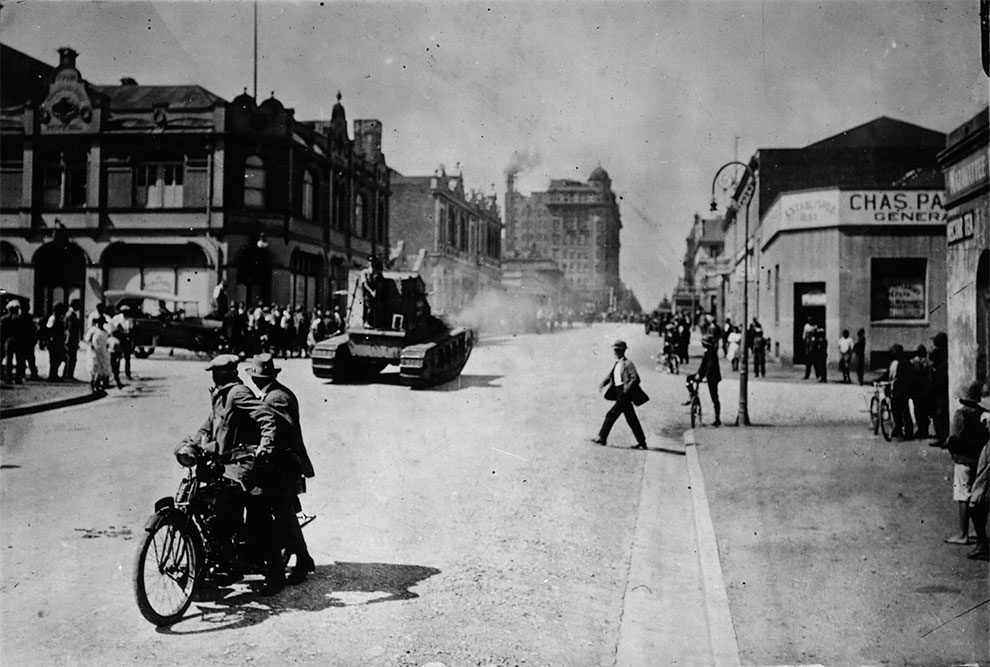
Getty Images
A British tank used in World War I is hoisted aboard the Cunard SS Vardulia at the King George V dock in London. It is to be shipped to Cornell University in New York, 1926:

Getty Images
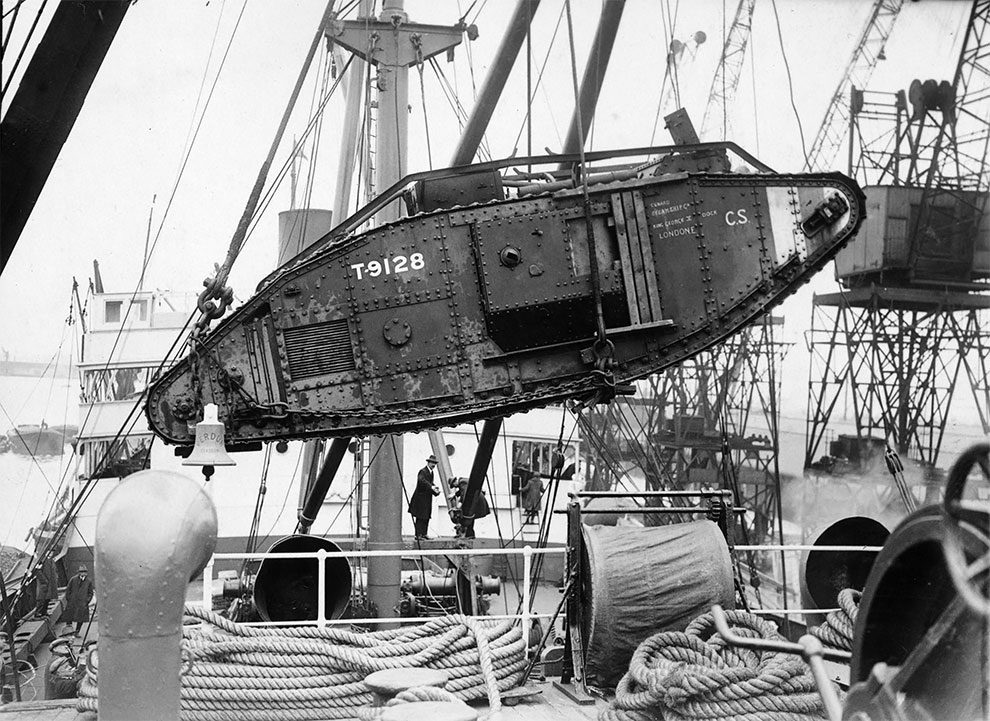
Getty Images
A wrecked tank on the battlefield at Ypres, 1919:

Getty Images
Two dummy tanks being pushed along a road by German soldiers, 1925:
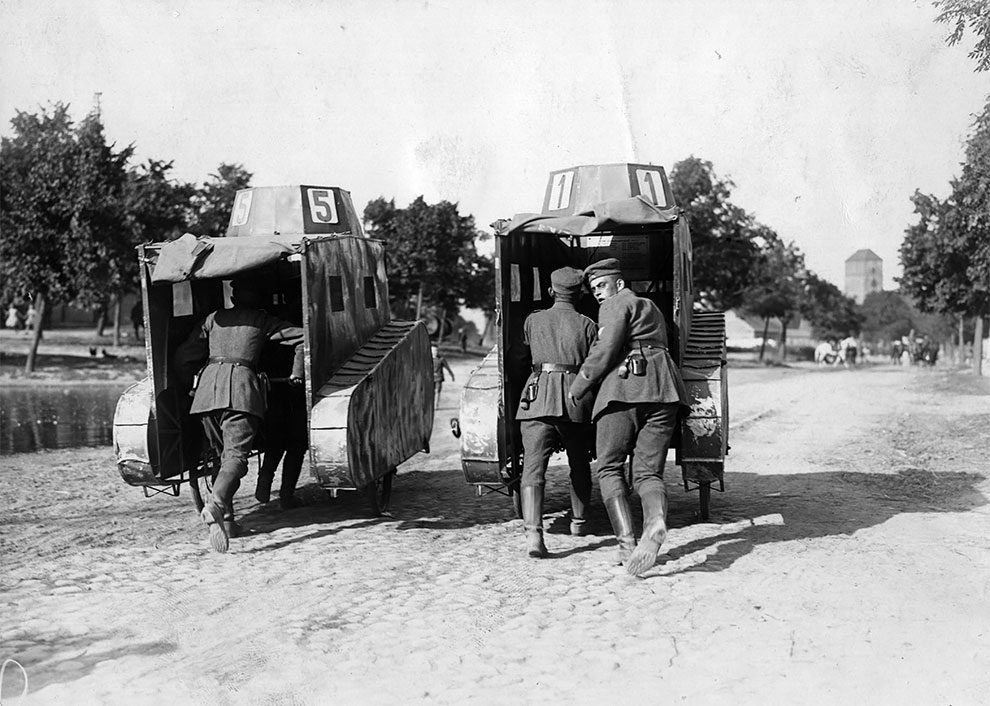
Getty Images
A man dismantling a tank after the end of the Great War, 1920:
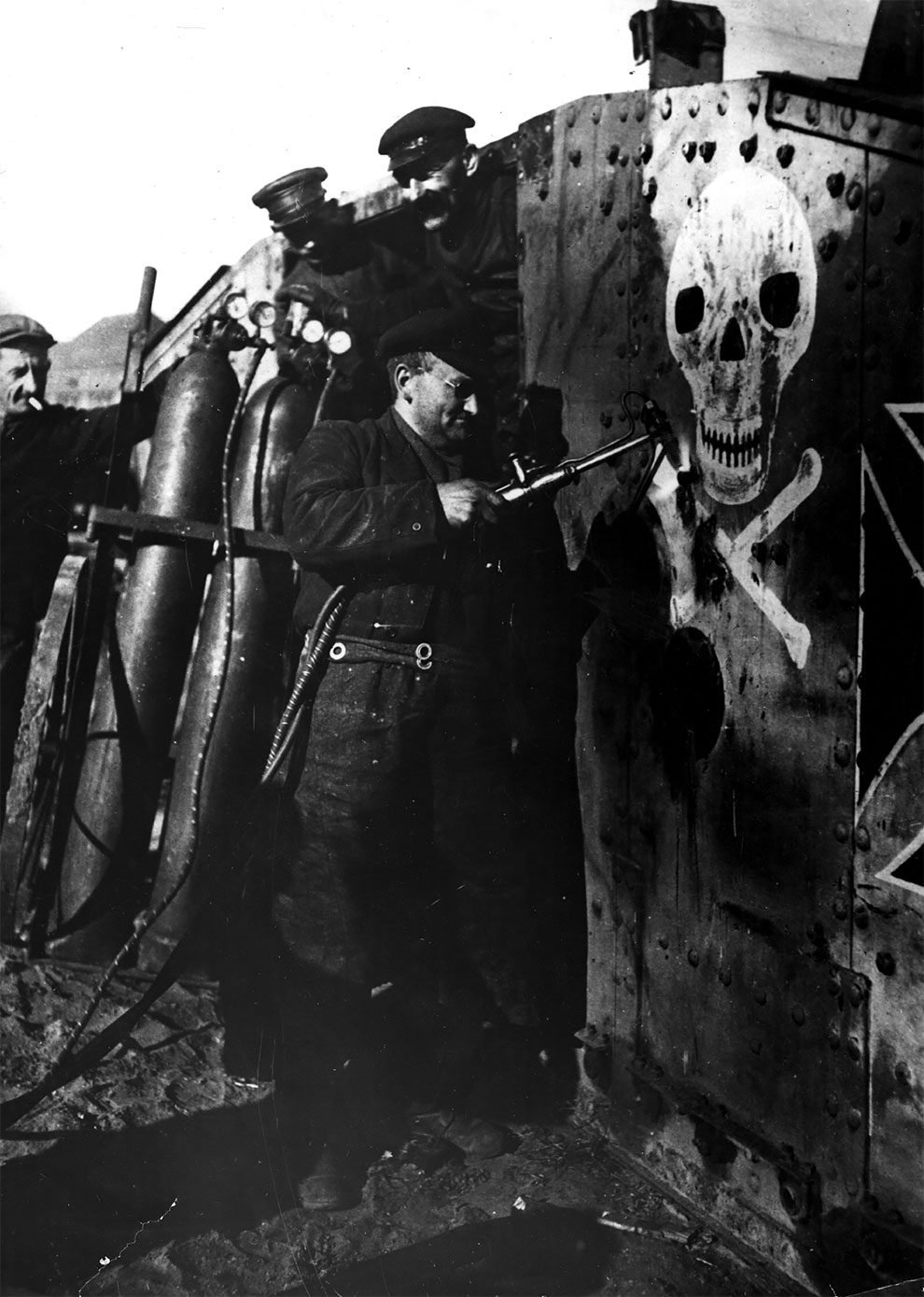
Getty Images
The authorities make Limerick city a special military area and workers respond by calling a general strike until the end of martial law. The “Scotch and Soda” tank as a barricade in the city, 1919:

Getty Images
Field Marshal Sir William Robert Robertson (1860–1933) visiting tank trials in Lincolnshire, 1918:
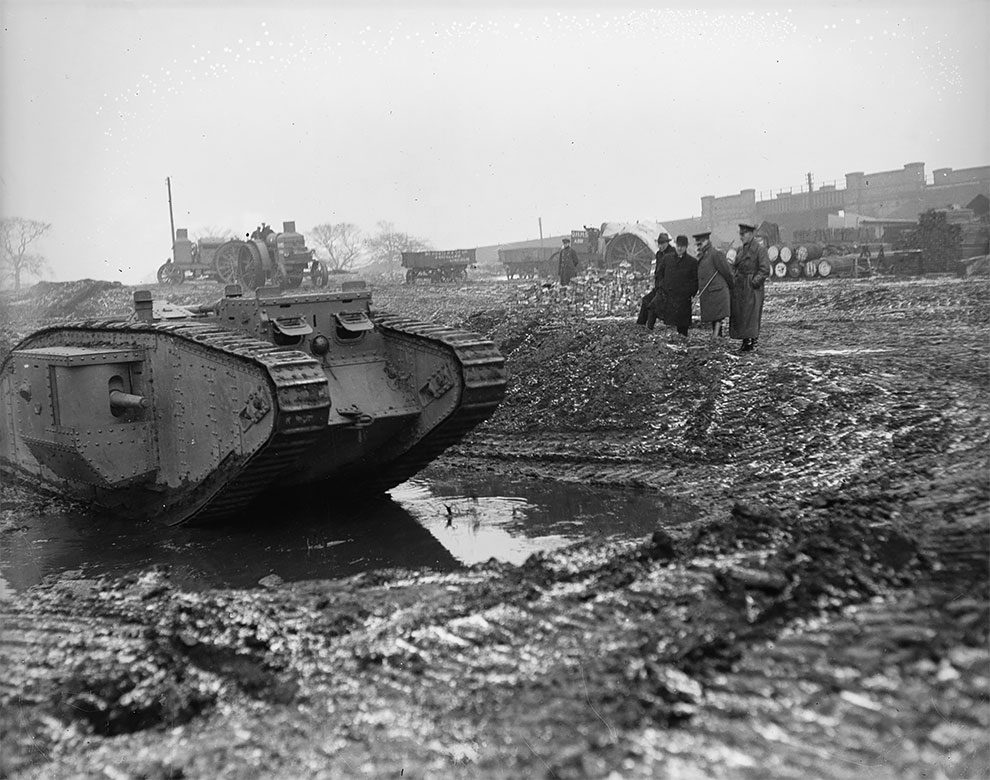
Getty Images
British tanks in Westminster Bridge Road, London, taking part in the Peace Procession, 1919:
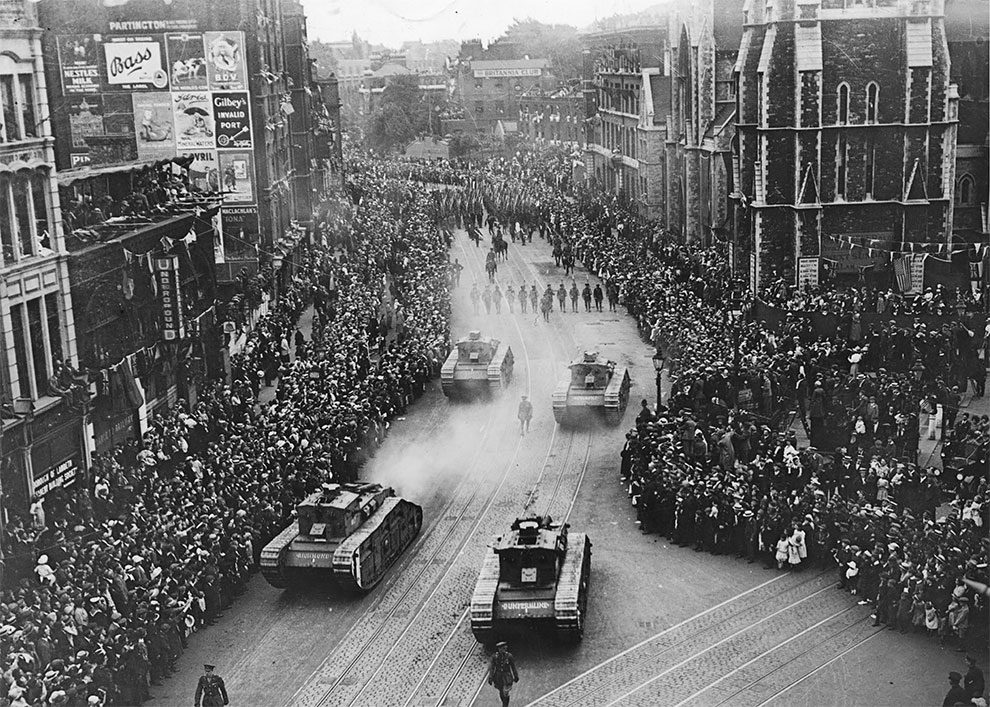
Getty Images
Crowds gather to see the tanks during the French occupation of Dusseldorf, 1923:
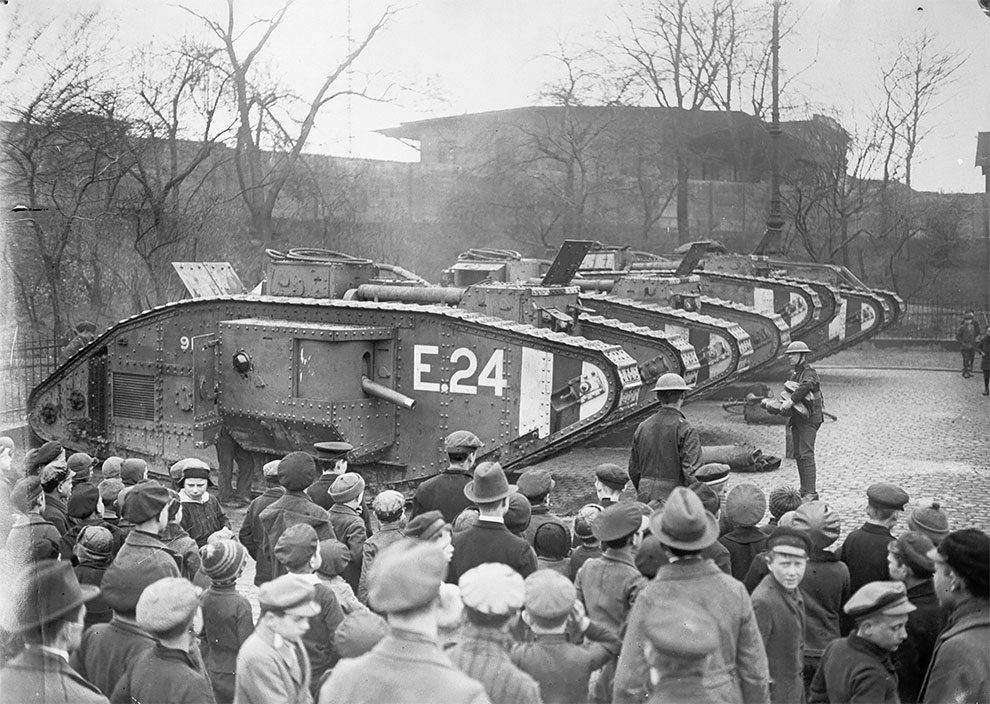
Getty Images
A British armoured tank leaving Wellington Barracks in London on the 8th, and penultimate, day of the General Strike, 1926:

Getty Images
Germans take war machines apart outside Berlin. Under the terms of the Treaty of Versailles Germany was required to disarm. This tank is in fact a British tank, captured and put into service by the Germans, 1919:
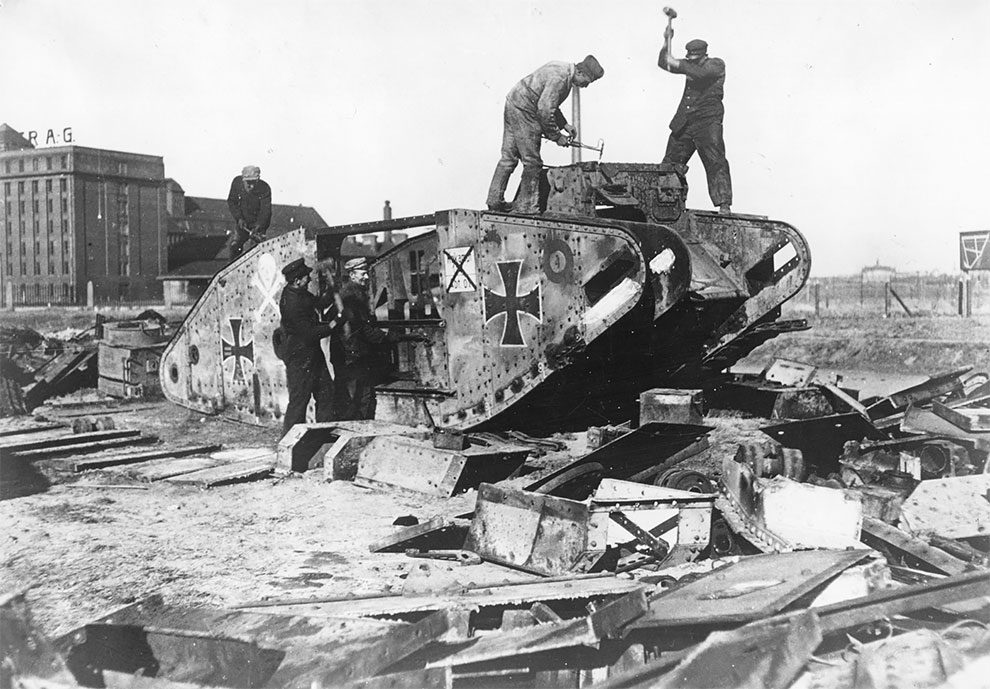
Getty Images